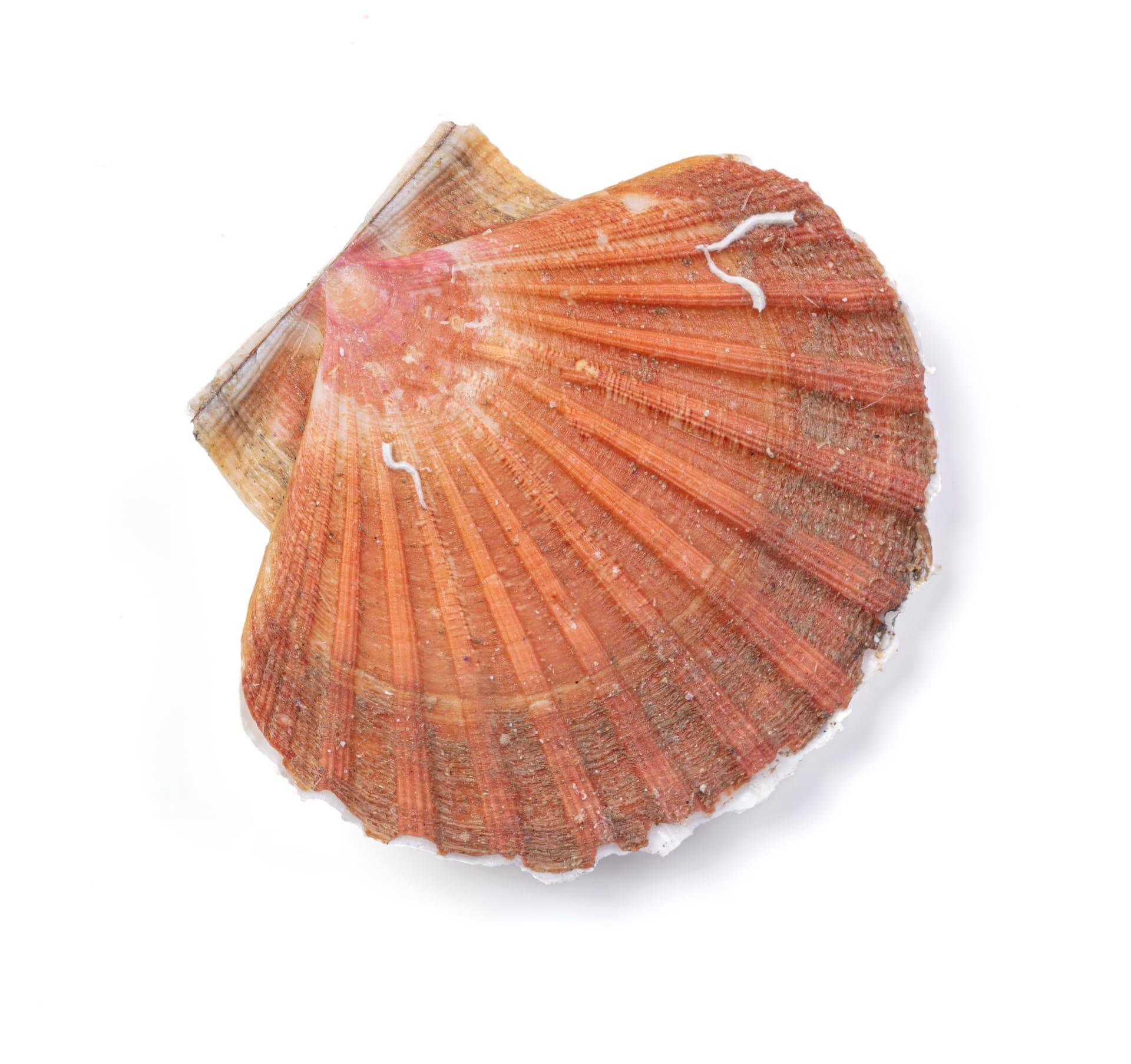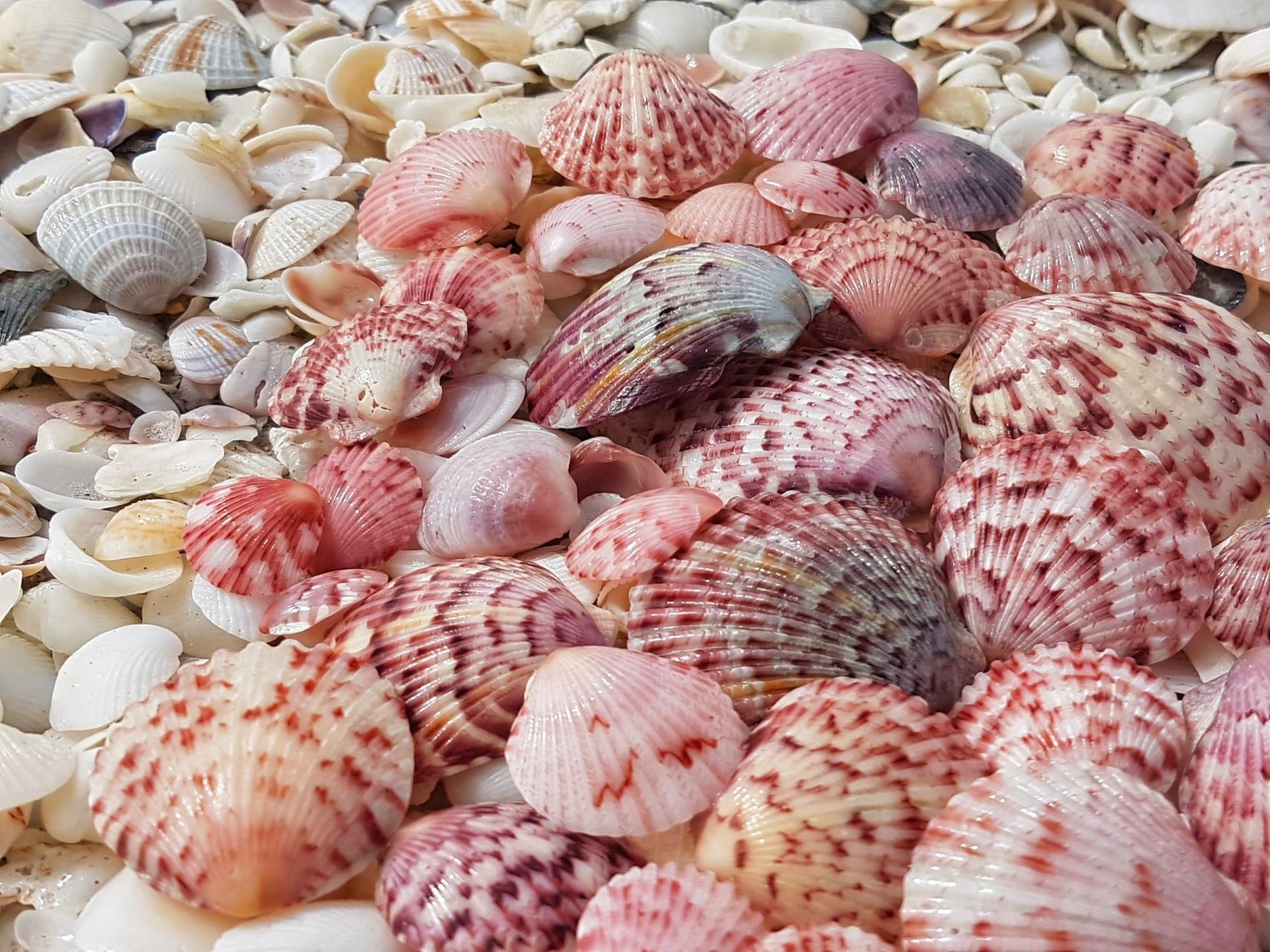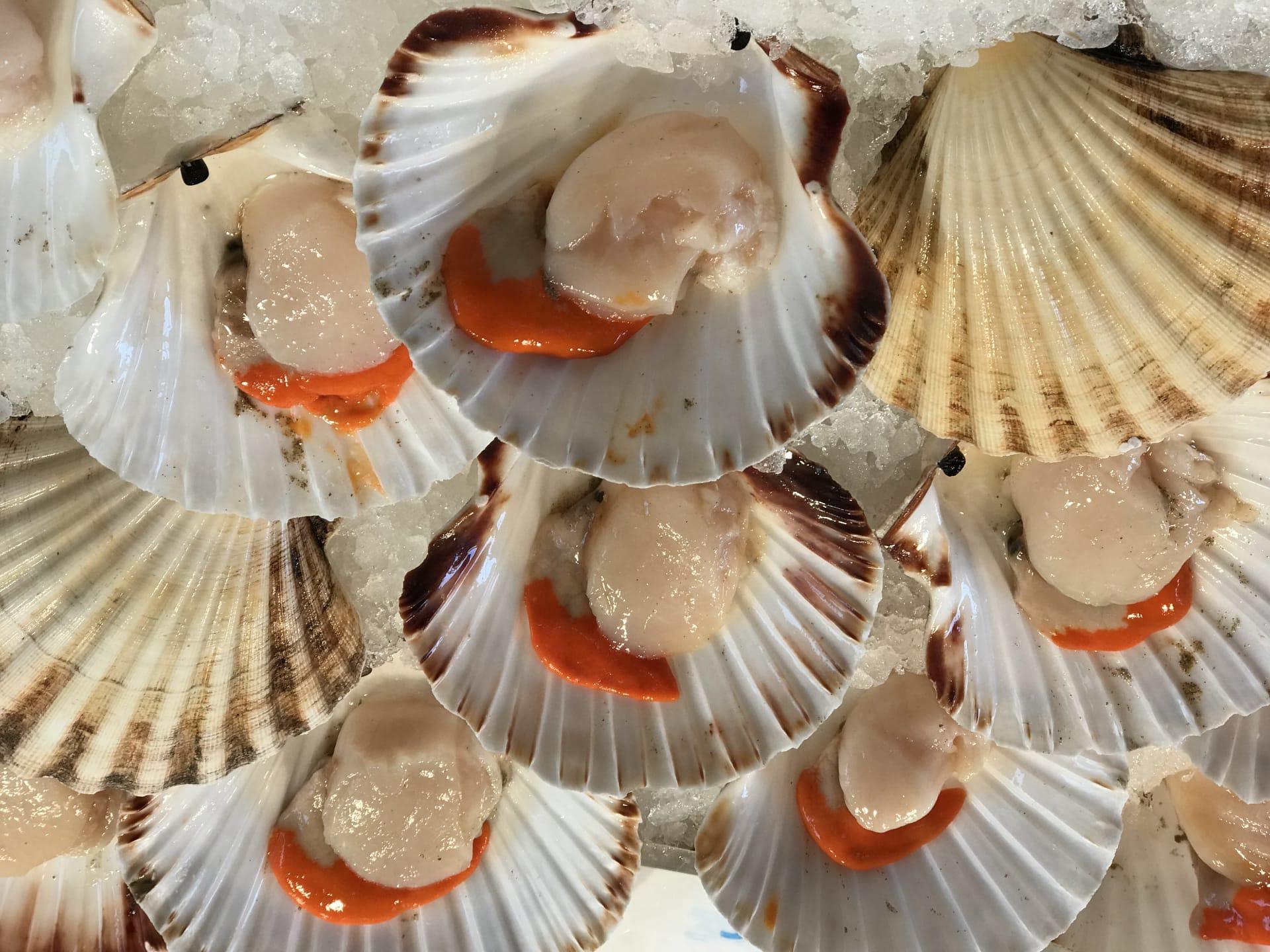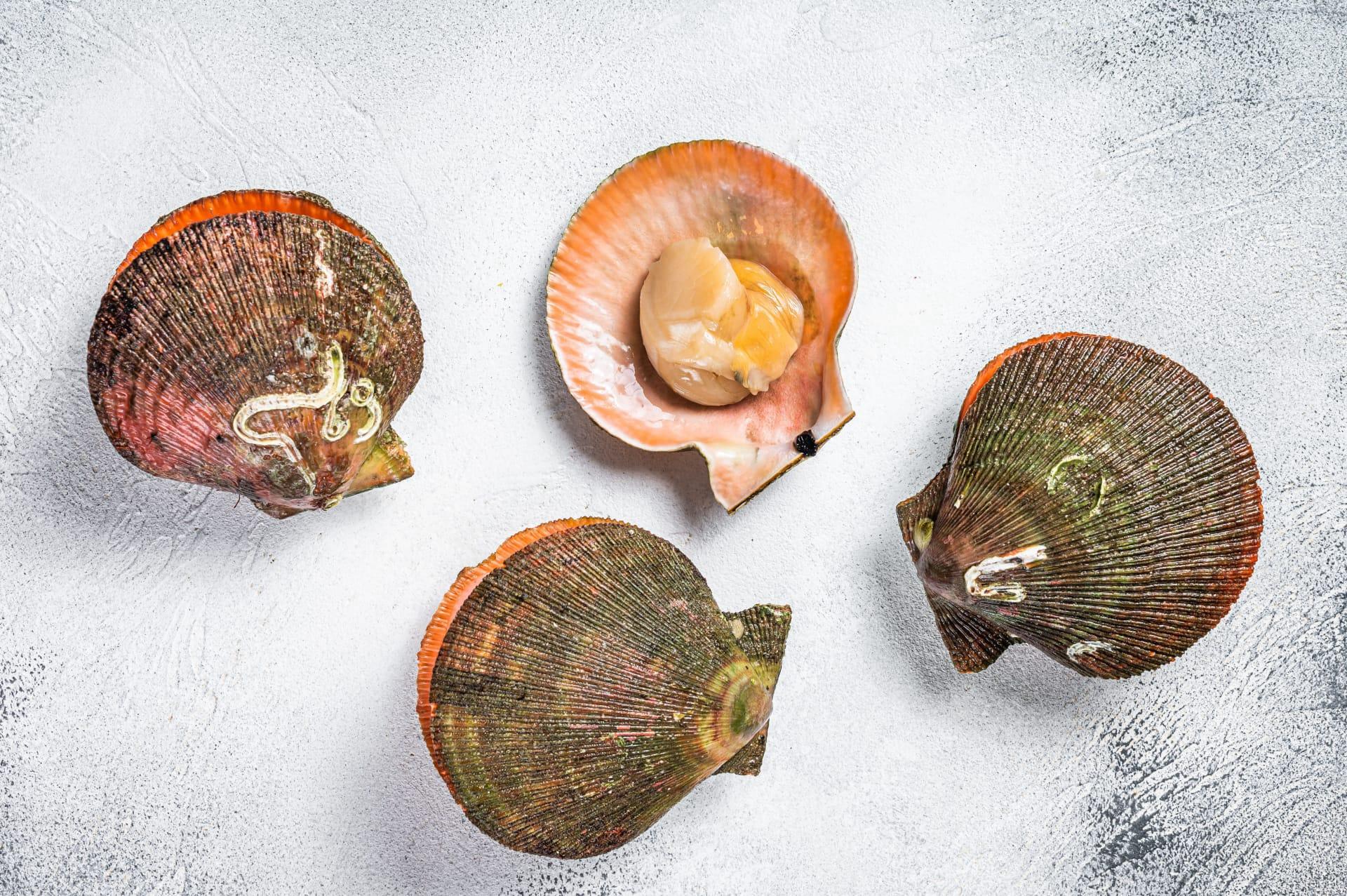Scallop Characteristics
- Home /
- Mini Encyclopedia /
- Animal /
- Scallop Characteristics
1
Scallops, known scientifically as members of the Pectinidae family, are fascinating marine bivalves. They typically range in size from about 1 to 9 inches, although some can grow even larger. Scallops live an average of 20 years, but some species can live much longer, up to 100 years! Their size and lifespan are influenced by factors like species, habitat, and environmental conditions.
One of the most distinctive organs of a scallop is its eyes. Scallops have a row of tiny eyes along the edge of their mantle, which is the part connecting the two shells. These eyes, numbering up to 200, are remarkably complex for a mollusk. Each eye is only about a millimeter in diameter but is equipped with a lens, a two-layered retina, and a mirror-like structure at the back. This unique setup allows scallops to detect light, motion, and shadows, helping them avoid predators and navigate their aquatic environment.

2
Question: Why do scallops have so many eyes?
Answer: Scallops have a multitude of eyes to enhance their survival in the marine ecosystem. Each eye works independently, providing a wide field of view and detailed perception of their surroundings. This extensive visual system helps scallops detect predators and other threats from various angles, enhancing their ability to escape danger. The eyes are also crucial for detecting favorable habitats and food sources, making them essential for the scallop's daily life and long-term survival.

3
Scallops are unique among bivalves for their ability to swim. They move by clapping their shells together, which propels them through the water. This movement is enabled by their strong adductor muscle, the same part that's often enjoyed as seafood. When threatened, scallops can swim away from predators with surprising speed and agility, often in a zigzag pattern.
As for feeding, scallops are filter feeders. They consume plankton and other small particles from the water. Water enters their shell, passes over gills where food particles are trapped, and then is expelled. This method allows them to eat without moving around, an efficient way to gather nutrients in their aquatic environment.

4
Scallops inhabit a variety of marine environments, ranging from shallow tidal areas to deep ocean floors. They prefer sandy, gravelly, or rocky substrates where they can anchor themselves or hide from predators. Scallop habitats are often rich in nutrients, which is crucial for their filter-feeding diet. Water temperature, salinity, and oxygen levels are also vital factors that influence their distribution.
In terms of reproduction, scallops are prolific breeders. They are usually hermaphrodites, meaning they have both male and female reproductive organs. Spawning occurs when water temperatures rise, typically in late spring or summer. Millions of eggs and sperm are released into the water, where fertilization occurs. The larvae then drift as plankton before settling to the ocean floor, where they mature into adult scallops.

5
Book: "Scallops: Biology, Ecology, Aquaculture, and Fisheries" by Shumway and Parsons (2016). This comprehensive volume provides an in-depth look into the world of scallops. It covers their biology, ecology, and the methods used in their aquaculture and fisheries. The book is a collaborative effort by experts from various countries, offering insights into the global significance of scallops.
Book: "The Secret Life of Scallops" by Helen Scales (2010). In this engaging book, marine biologist Helen Scales delves into the surprising and complex world of scallops. She explores their unique behaviors, the ecosystems they inhabit, and their role in human culture and cuisine. The book combines scientific exploration with personal anecdotes, making it an accessible and enjoyable read for both scientists and general readers.